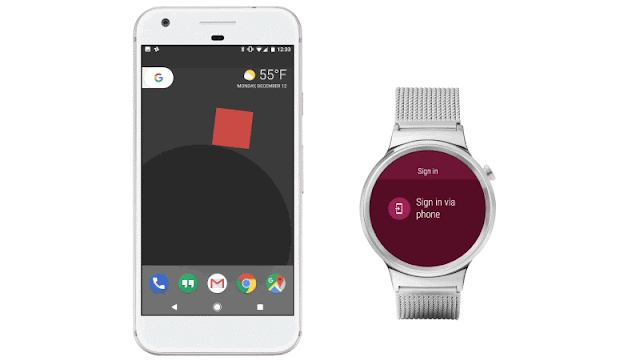At Google I/O last year we announced ConstraintLayout, which enables you to build complex layouts while maintaining a flat view hierarchy. It is also fully supported in Android Studio's Visual Layout Editor.
At the same time, we open sourced FlexboxLayout to bring the same functionalities of the CSS Flexible Layout module to Android. Here are some cases where
FlexboxLayout is particularly effective.FlexboxLayout can be interpreted as an advanced LinearLayout
because both layouts align their child views sequentially. The significant
difference between LinearLayout and FlexboxLayout is that
FlexboxLayout has a feature for wrapping.
That means if you add the flexWrap="wrap" attribute,
FlexboxLayout puts a view to a new line if there is not enough
space left in the current line as shown in the picture below.One layout for various screen sizes
With that characteristic in mind, let's take a case where you want to put views sequentially but have them move to new lines if the available space changes (due to a device factor, orientation changes or the window resizing in the multi-window mode).LinearLayout or RelativeLayout. But
the dialog above is built with a single FlexboxLayout.
The technique used in the example is setting the
flexWrap="wrap" as
explained above,
<com .google.android.flexbox.flexboxlayout
android:layout_width="match_parent"
android:layout_height="wrap_content"
app:flexwrap="wrap">
then you can get the following layout where child views are aligned to a new
line instead of overflowing its parent.
Another technique I'd like to highlight is setting the
layout_flexGrow attribute to an individual child. This helps
improve the look of the final layout when free space is left over. The
layout_flexGrow attribute works similar to the
layout_weight attribute in LinearLayout. That means
FlexboxLayout will distribute the remaining space according to the
layout_flexGrow value set to each child in the same line.
In the example below, it assumes each child has the
layout_flexGrow
attribute set to 1, so free space will be evenly distributed to
each of them.
<android .support.design.widget.TextInputLayout
android:layout_width="100dp"
android:layout_height="wrap_content"
app:layout_flexgrow="1">
You can check out the complete layout xml file in the GitHub repository.
RecyclerView integration
Another advantage ofFlexboxLayout is that it can be integrated
with RecyclerView.
With the latest release of the alpha
version the new FlexboxLayoutManager extends
RecyclerView.LayoutManager, now you can make use of the Flexbox
functionalities in a scrollable container in much more memory-efficient way.
Note that you can still achieve a scrollable Flexbox container with
FlexboxLayout wrapped with ScrollView. But, you will
be likely to experience jankiness or even an OutOfMemoryError if the number of
items contained in the layout is large, as FlexboxLayout doesn't
take view recycling into account for the views that go off the screen as the
user scrolls.
(If you would like to learn more about the RecyclerView in details, you can check out the videos from the Android UI toolkit team such as 1, 2)
A real world example where the
RecyclerView integration is useful
is for apps like the Google Photos app or News apps, both expect large number of
items while needing to handle various width of items.
One example is found in the demo application in the
FlexboxLayout repository. As you can see in
the repository, each image shown in RecyclerView has a different
width. But by setting the flexWrap setting to wrap,
FlexboxLayoutManager layoutManager = new FlexboxLayoutManager(); layoutManager.setFlexWrap(FlexWrap.WRAP);and setting the
flexGrow (as you can see, you can configure the
attributes through FlexboxLayoutManager and
FlexboxLayoutManager.LayoutParams for child attributes instead of
configuring it from xml) attribute to a positive value for each child,
void bindTo(Drawable drawable) {
mImageView.setImageDrawable(drawable);
ViewGroup.LayoutParams lp = mImageView.getLayoutParams();
if (lp instanceof FlexboxLayoutManager.LayoutParams) {
FlexboxLayoutManager.LayoutParams flexboxLp =
(FlexboxLayoutManager.LayoutParams) mImageView.getLayoutParams();
flexboxLp.setFlexGrow(1.0f);
}
}
you can see every image fits within the layout nicely regardless of the screen
orientation.
- Playground
demo app - using
FlexboxLayoutandFlexboxLayoutManager. - Cat
gallery demo app - using
FlexboxLayoutManager














